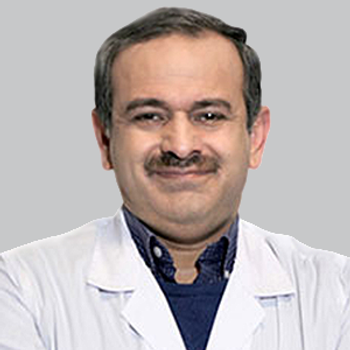
Treatment Selection in Multiple Sclerosis Management
Drs Hesham Abboud and Benjamin Greenberg share their approach to treatment selection and highlight the importance of individualizing treatment and patient education.
Episodes in this series

Ahmed Obeidat, MD, PhD: In thinking about the medications we have, and Dr Greenberg talked about over 20 and the different classes and classification, how do you select medication for your patients? How do you people say you are escalator or are you kind of a start sometimes with the highest efficacy medications and then deescalate or do you have a mix of that? We're curious to hear about that.
Hesham Abboud, MD: I try to avoid the one-size-fits-all models. I tailor to every individual patient. If the patient comes with a lot of negative predictors, I try to choose something that is more highly active. Let's say someone with a lot of spinal cord lesions, a lot of brain stem lesions, they didn't recover very well from their MS attack, they have a lot of comorbidities, then I try to use one of the highly active medications, either B-cell depleting agent or something like natalizumab if they are just virus negative. In average severity patients, I usually give them reading material on some of the oral medications, either S1P modulator or one of the fumarates, and then I let them make the choice with some help if they have any questions.
Ahmed Obeidat, MD, PhD: Dr Greenberg, yes.
Benjamin Greenberg, MD: It's interesting listening to you discuss the conversation with patients. Again, I'm dating myself now, but back in the days where we only had a few, I prided myself on discussing every medication with every patient. And over the years I would clock myself. How long of a visit does it take to go through all the medications? When we only had injectables, that was a 60 minute visit. More recently, if you were to discuss every medication in detail, it would be a 3 hour visit. And even our patients wouldn't want to sit there for that long. In our practice we definitely invest in that shared-decision-making model where we want to make sure that patients understand at least the broad difference between drugs because we've seen wide varieties in compliance and adherence and we want to empower patients in this decision making process. And at least for us, and I don't know if this is true for you, but we're also having to be more and more mindful of the fact that whatever the patients first choice is that we come to together, it may or may not be covered. And sometimes we must have patients pick a choice 1, 2, or 3 so that we can navigate the third-party payer system. It's a much more complicated process than it used to be. But it's nice to have options. It's nice to have all these drugs to choose from, but it's a much longer visit and a longer conversation to make that final decision.
Transcript Edited for Clarity
Newsletter
Keep your finger on the pulse of neurology—subscribe to NeurologyLive for expert interviews, new data, and breakthrough treatment updates.



































